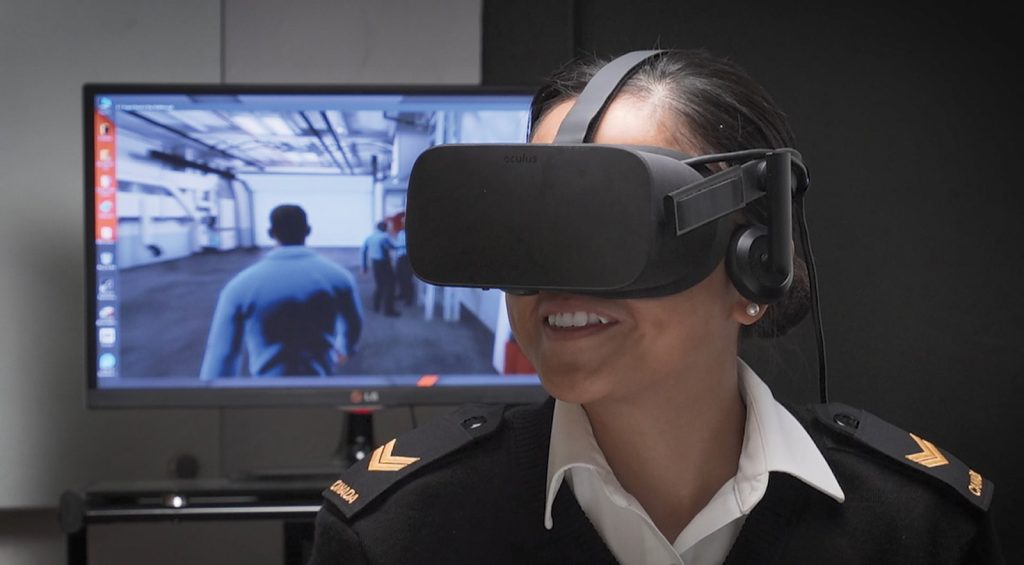Training centre trials virtual reality tools
By Lookout on May 30, 2021 with Comments 0
DND
––
Special scenarios for navigation, ship handling, and anchoring
Learning to navigate a ship more than two times longer than a football field is no small feat. Virtual reality training is enabling a powerful and more effective way of conducting ship navigation training to allow navigators to become more effective and aware of the challenges before getting behind the wheel.
“Students will find themselves in training scenarios where they will be able to see the ship from perspectives that wouldn’t be possible during real-world training, such as under the surface as the ship they are manoeuvring comes to anchor,” said Lieutenant (Navy) Sara Kucher, a Curriculum Analyst with Naval Training Development Centre (Pacific) (NTDC(P)).“These perspectives will provide a more rounded experience for students and answer the ‘why do we do that?’ questions they might have by providing a visual representation to accompany the classroom instruction.”
Through Innovative Solutions Canada, the Royal Canadian Navy’s navigation school, NTDC(P), has partnered with developers from Chaac Technologies to test the viability of having virtual reality in the classroom.
Chaac Technologies is a geospatial technology software company. They use 3D modeling and photo-realistic imagery to create training programs that provide safety procedure training for situations that would normally be found in dangerous environments. By using the virtual reality technology, trainees can learn and practice these procedures while reducing the risk to their personal safety.
“The team at NTDC(P) have seized a fantastic opportunity by matching new tech from our partners at Innovation Solutions Canada with areas of their training plan and objectives that can be greatly enhanced with these new methods,” said Lieutenant-Commander Lee Vessey from Director Navy Innovation. “There is some hard work being done on design development by the team and the result will be greater capacity for training for some of the most challenging tasks. It is an innovative use of new tech that others can learn from in their own organizations.”
NTDC(P) is developing and testing this technology by immersing students into virtual reality training scenarios for navigation, ship handling, and anchoring.
The technology would also be valuable for students who may be struggling during practical assessments, which take place in the Navigation and Bridge Simulator as well as at sea. Those students would be able to use the program to revisit and practice the skills they find difficult without having to rely on the availability of the simulator, other students to assist, or an instructor to mentor them.
As the programs are developed, the Royal Canadian Navy could have the capability to use the technology to enable Naval Reserve Divisions to maintain navigation and ship handling skills in the absence of available simulators. Fleet bridge teams could have the opportunity to practice these same skills prior to deployment, or while they are in port away from available simulators.
Navigation officers and commanding officers may be able to practice a difficult navigation passage prior to embarking on those routes. The possibilities are endless and NTDC(P) is eager to test virtual reality in the classroom, bring the students into the development process, and see where this technology can be taken.
––––
Filed Under: Top Stories
About the Author:






